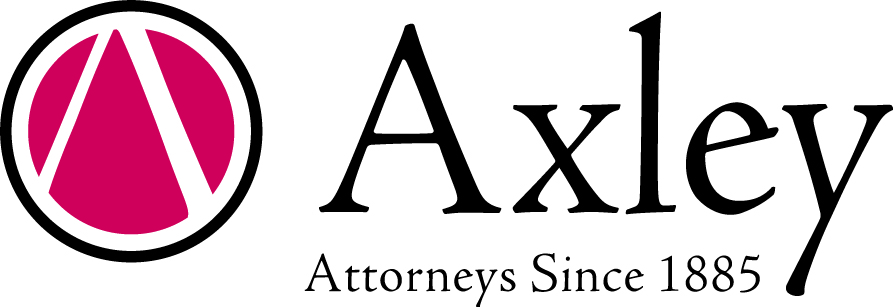
- This event has passed.

March 20, 2014 @ 12:00 am
Event Navigation
The Green Bay Packers social media team is a lot like the Green Bay Packers football team. Both plan ahead, develop game plans, carefully analyze their performance and adjust their strategies – sometimes at the last minute – to changing situations.
“We really come together as a team,” Packers Digital Manager Garrison Cummings told the Social Media Breakfast Madison Wednesday (March 19, 2014).
It takes a lot of planning – which includes development of a social media calendar around the team’s schedule of player drafts, training camps and games – and teamwork on the part of every aspect of the organization, he said.
And then, always be prepared for the unexpected.
“We have lots of content ready so we can make adjustments,” because, Cummings said, quoting boxer Mike Tyson, “Everybody has a plan until he gets punched in the face.”
Cummings said his tenure as the Packers social media manager the past five seasons has been “a fantastic ride” that has included a Super Bowl championship (yes, he wore a Super Bowl ring during his presentation) but also some challenges including a losing streak last November.
The Packer Media Group’s approach to social media is affected by the performance of the team. When they are winning, the strategy is to help fans celebrate and build off that success. When the team is losing, “fans want to commiserate together” but also look for signs of hope.
The team’s social media presence includes everything from merchandise sales to suite sales to awareness of community events to building stronger connections between the players and the fans, he said.
Social media, he said, is about generating engagement, building brand value, and providing service. But it all boils down setting business objectives, then working to achieve those goals through social media and carefully analyzing your successes and failures.
The question the Packers social media team keeps asking themselves, Cummings said, is, “How does all our content relate to our business objectives?” For example, “Does each post build awareness, drive engagement, create some sort of action on behalf of our audience?” or “How do we build awareness leading up to the draft, engage community and introduce players to our fan base?”
Cummings used an example of the team’s St. Patrick’s Day campaign where they invited users to share photos of themselves wearing Packer green. The team asked themselves, “How can we fill out this campaign, and how can we think holistically, utilizing web, email, social?” The end result was a correlation, he said, between the campaign and visits to the Packers Pro Shop website.
The Packers Social Media Game Plan is built around these concepts:
- Set Goals
- Align to Business Objectives
- Align to Existing Campaigns/Events
- Align Content to Personas.
Packer fans come in many shapes and sizes; some want all the details and some only the highlights, for example, and some want customer service. No matter which type of fan they are, the question becomes, “How are you driving them up the ladder of engagement?” - Prioritize for Your Audience.
For Twitter, Cummings said, people want a lot of updates, and he gets a lot of conversion to the website from Twitter users. Facebook produces less conversion but those users love to engage with photos. - Build Off Previous Learnings.
It is that last point – which comes down to analytics – that drives much of what determines the success of social media, Cummings emphasized.
“We look at them (analytics) every day,” he said. When things work, you build off that success. When they don’t, you adjust.
It’s like a Social Media Playbook that includes many options depending on the situation you are facing. “The name of social media is you have to be nimble,” Cummings said.
Building off a resource he recommends – Social Media Metrics Secrets by John Lovett – Cummings and the Packers Media Group break down their analytics into these four metrics:
Counting Metrics:
These are the simple metrics: Fans, followers, likes, retweets, favorites, clicks. “They can tell you how much, how many, how often but usually can’t tell you whether a campaign is successful.” It can help you optimize content. At first, Cummings said, his social media team was immersed in counting metrics. But they realized they need to dig deeper because once you align your posts to objectives, you realize not every post is equal. That’s where outcome metrics come into play.
Outcome Metrics:
KPIs (Key Performance Indicators) – which are based on objectives – really tell you when things are good and when things are bad. “This is really where I spend most of my time as a social media manager,” Cummings said, because it really helps you understand the relationship to your business objectives. Outcome metrics involve ratios, percentages, and averages and include positive to negative feedback, converters to visitors, click through rates, and engagement rates. It answers the key questions such as, Am I really driving the types of activities I want? What are converters to business? Are people taking social actions rather than just coming to our page? If our objective is to drive people to our site, is our click-through rate going up or down? Why is it going down? Is the audience shifting away from Facebook to another channel?
Business Value Metrics:
This is what the key stakeholders in an organization want to know. What is revenue? How is this enhancing our brand awareness? Business Value Metrics analyze Customer Lifetime Value, Earned Media Generated, Percent of Qualified Leads, Share of Voice, and Customer (Fan) Acquisition Growth. Are we really doing a great job, for example, of driving people to our site?
Foundational Metrics:
These are the most important and difficult analytics. They involve looking across any platform and measuring and creating a strategy to determine if it is successful. Foundational Metrics cover Interaction, Engagement, Influence, Advocates, and Impact. It is comparing results from various platforms. What is the influence of people sharing content? Are they sharing, liking, and how is this influencing your message and how are people beginning to talk about that message in social media channels? What positive sentiment are your advocates providing for you, and at what volume? How does this enhance your business objectives?
Cummings cited a couple case studies:
Quote Series:
When the Packers went through a tough spell on the field last November after Aaron Rodgers was injured, the social media team needed to pick up fan spirits and re-ignite engagement so they developed a Quote Series of posters combining images of Packer players with inspirational quotes. The result? A 115% increase in the click-through rate.
Excitement for the Game:
 This series of images created buzz around upcoming games and produced a 238% higher engagement rate than other posts.
This series of images created buzz around upcoming games and produced a 238% higher engagement rate than other posts.
Fan Photo Galleries:
 Having fans send in their own photo galleries resulted in a 40% higher “like” rate than other posts and and a 57% increase in the engagement rate.
Having fans send in their own photo galleries resulted in a 40% higher “like” rate than other posts and and a 57% increase in the engagement rate.
The overall result was “one of our best Novembers,” better than the prior season when the team was winning, “because we were able to shift to the situation in front of us.”
“It didn’t matter what was happening on the field, people were still very excited about the Green Bay Packers,” Cummings said.
The future of successful social media, Cummings said, is refining analytics and learning how to use them to improve results and achieve objectives:
After all, he said, “You’re only as good as your results.”
Key takeaways:
1. Establish goals and business objectives
2. Know your audience
3. Tailor content to personas
4. Create a measurement framework
5. Be a continuous learner
Written by Bill Hurley, (@billhurleymedia / billhurleymedia.com / beachmaniac.com) editor, writer, social media strategist, digital publisher. BillHurleyMail@gmail.com, bill@smbmad.org.
Video by Jeffrey Powers at Geekazine.com:
SPONSORS

















